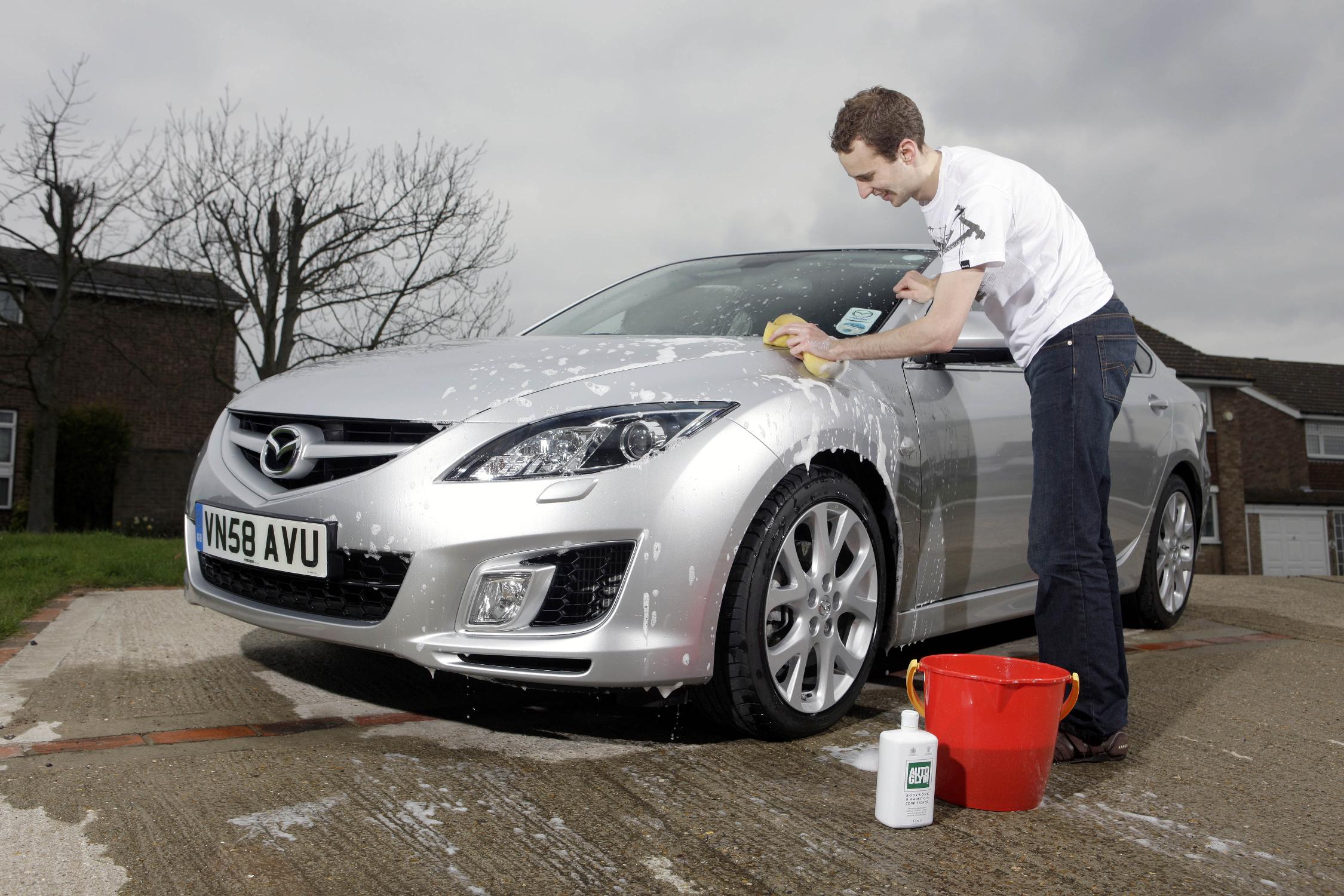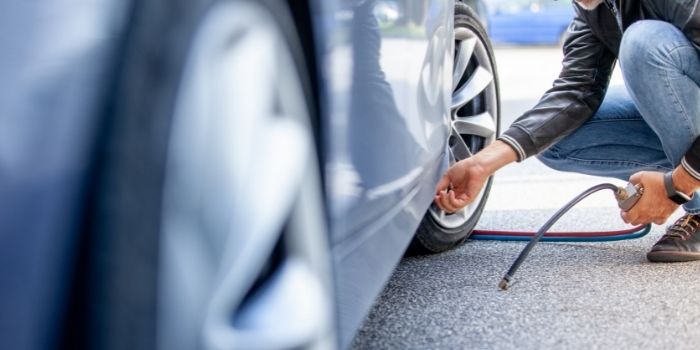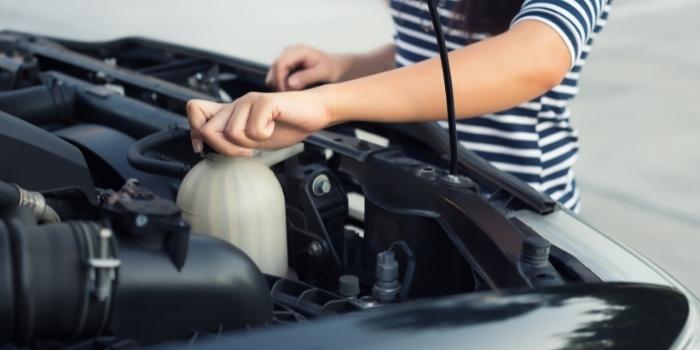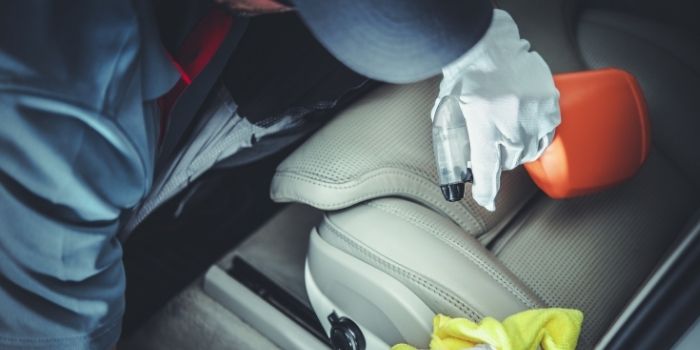If you live in a state that gets significant amounts of snow in the winter or where it is simply too cold for months on end to even think about cleaning your car, then you know that spring is the first opportunity to address the things that you’ve let slip for the last few months.
Cleaning your car in the spring is about more than just making it shine though, it’s about assessing everything from tires to rust to engine condition and getting your ride into top shape for the coming year.
Here are a few things you should address during your spring car care, cleaning & maintenance…

Table of Contents
Spring Car Care and Maintenance Checklist
One of the most effective ways to prepare your car and to boost your car’s fuel efficiency is to get it serviced.
When you take your car to a dealership for service, the mechanic can spot issues that could be hurting your gas mileage.
Problems like a dirty filter or low levels of transmission fluid are easy to fix and can have a real impact on your fuel efficiency.
Plus, you can follow these additional tips that can help…
1- Batteries
The battery is the hardest working part of your car in the cold weather.
In fact, winter stress can decrease the performance of your battery, spark plugs, and wires by up to 60%.
Spring is the perfect time to break out an ohmmeter meter to test the electrical components in your car.
If the battery is more than three years old, you need to be especially vigilant.
Testing in the spring is smart because if items do need to be replaced, you have time to save up and get the jobs done before winter rolls around again.
2- Salt and the Undercarriage
Salt is corrosive to the metal components in any car.
Exposed metal can rust within days of being exposed to the salty water that coats most roadways after snowplows have passed over them.
When you wash the exterior of your car in the spring, take care to look at the undercarriage, lower body panels, and rocker panels.
These areas are most prone to rust. Remove wheel well protectors and other trim components if necessary to get a good look at what is going on.
If you find rust, use a product to convert it so that it doesn’t spread, and then paint or undercoat the exposed metal to reduce future problems.
A few hours and thirty dollars’ worth of product can save you hundreds of dollars down the line.
3- Interior Grime
Salt, dirt, snow, ice, and myriad other debris find their way into your car during the winter.
Just as with the exterior, salt and other winter grime can take a nasty toll on the carpet, leather, upholstery, and the trim inside of your car.
Start by cleaning your car trunk, taking care to remove unnecessary clutter, and vacuuming everything thoroughly.
After that, move to the back seat, passenger seat, and finally the driver’s area.
Use carpet cleaner, upholstery sprays, and leather conditioner as necessary. If you do find salt, use soap and water to really scrub the area.
Cleaning experts recommend a homemade car cleaners with wet-dry vacuum to really suck the grime out of the carpet after scrubbing them down.
If you have winter floor mats in place, now is the time to take them out, wash them up, and treat them so that they remain useable and attractive for next winter.

4- Tire Pressure
When your tires are too soft, the level of friction between the rubber and the road increases; this means your car’s engine will have to work harder to keep the car moving.
In fact, your vehicle’s gas mileage is reduced by 0.4 percent for each pound per square inch drop in pressure in the four tires.
Check your tire pressure on a regular basis, and be sure to fill the tires to the pressure recommended by the manufacturer.
5- Fluids, Suspension, Brakes, and Belts
When it comes to spring car care, inspecting fluids, suspension, brakes and other parts is a necessity.
Open the hood and start by inspecting everything from coolant levels to brake fluid.
Check for signs of oil leaks and coolant leaks. Look at belts, hoses, and any other rubber component to assess for cracks or damage.
These items are a bit pricey to replace, but the cost is far less than what you will incur if they break while driving and you lose critical fluids.
Give the engine a gentle but thorough cleaning.
Just be careful about spraying water all over the place. A used, damp rag that you can throw out after you are done is probably the better way to go.
Once you are done under the hood, move on to inspecting your brakes and suspension.
You may have done a visual inspection of these items while cleaning the undercarriage, but you need to do a driving test to determine how well your car stops and how it handles bumps, potholes, and uneven terrain.
Replacing brake and suspension components before they wear out can protect other components of the car and ensure your safety at the same time.
The National Institute for Automotive Service Excellence suggests that you check all of your lights and bulbs as well.
Wrapping Up
You’ll have spent the better part of a day (and maybe even a whole weekend) on spring maintenance for your car.
The time invested will be worth it though because it will extend the life of your vehicle, help to prevent future breakdowns, and ensure your safety on the road.
Spring cleaning is the most important time of the year for vehicle maintenance, so don’t let it go to waste.

Based in Orem (Utah) John Paterson graduated from Utah Valley University and has begun writing in 2009. He has a large wealth of experience in writing articles related to cars, automotive repair, wheels, cleaning/maintenance, and much more. He has also written instructional articles in a similar niche for a few online publications as well. Currently, he works as a mechanic in his personal garage shop where he loves serving his countrymen from his heart.




